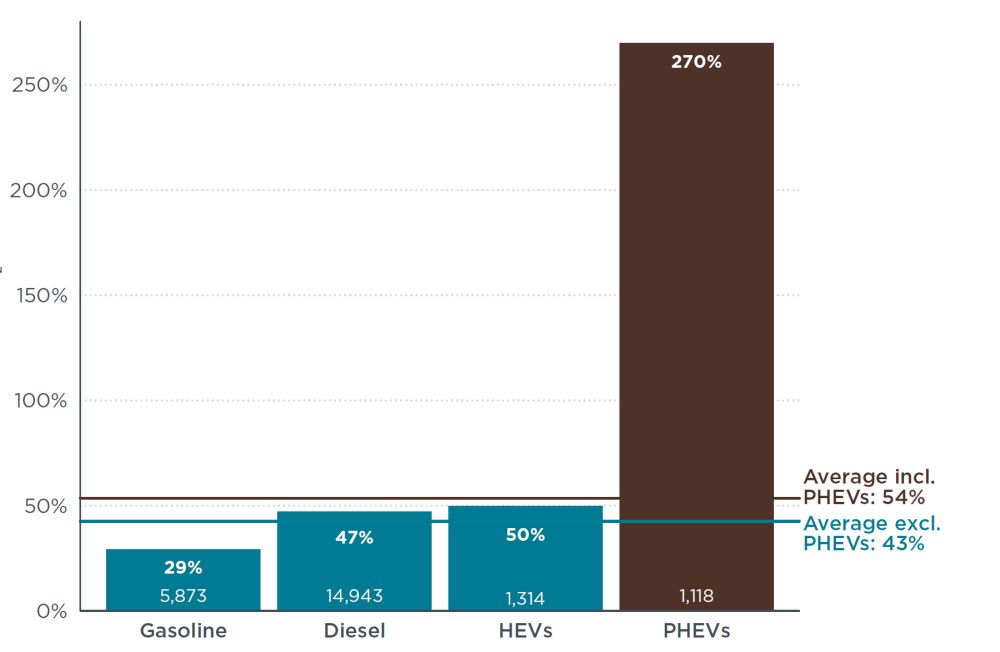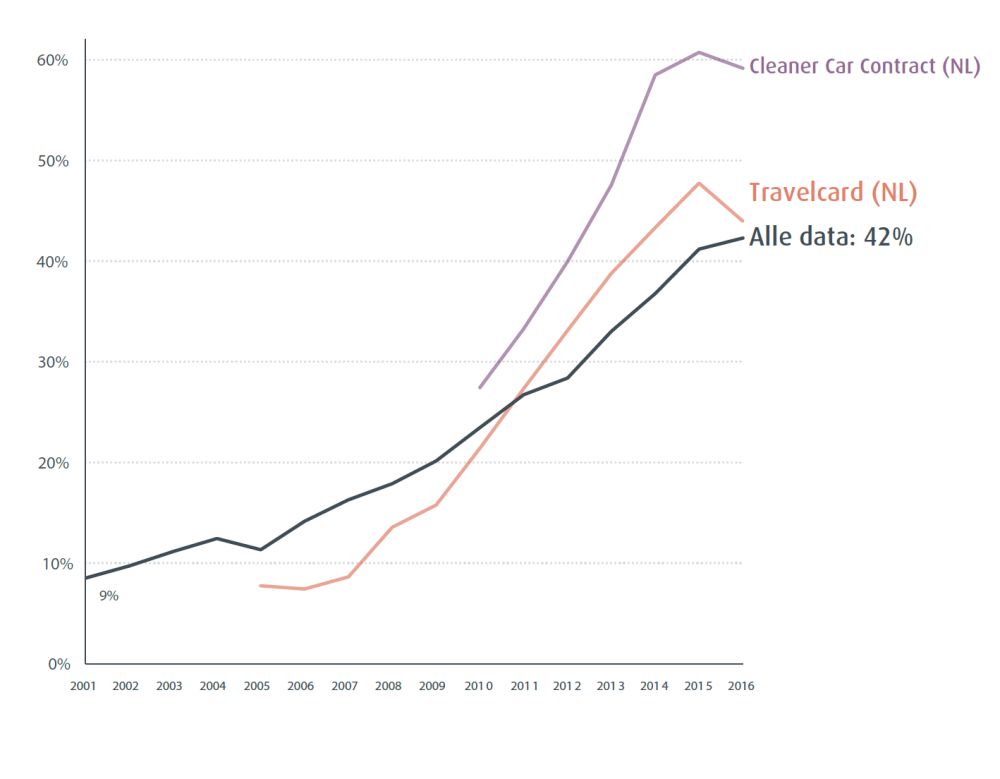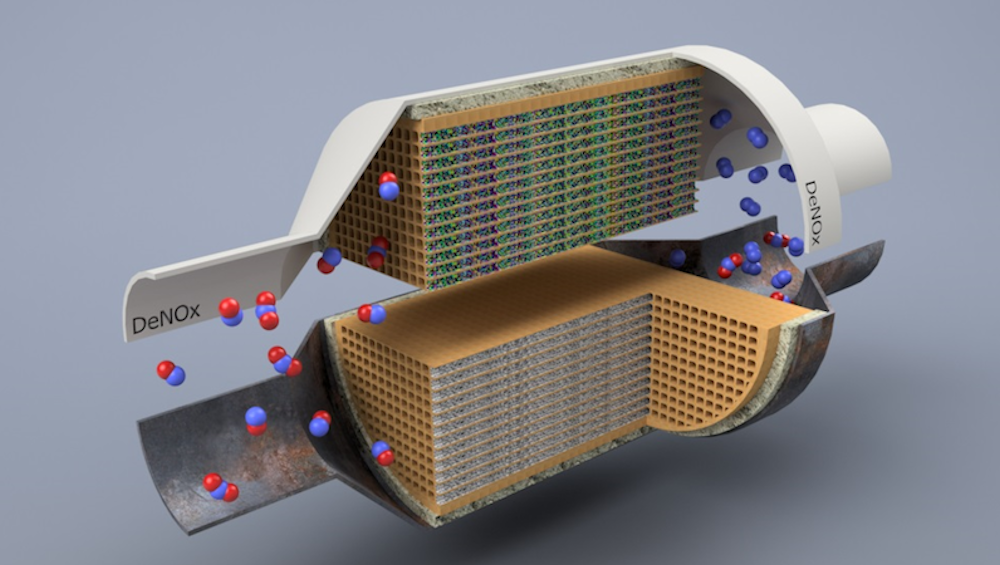
In the Netherlands, plug-in hybrids consume more than 2.5 times more fuel than their type approval would have us believe. Diesels consume 47% more on average, and petrol cars 29%. This is according to the latest data from The International Council of Clean Transportation.
This Institute researched the actual consumption of cars on the road versus the results of the type approval throughout Europe (press release). That discrepancy has increased once again: in all models studied, CO2 increased from 9% to 42%. This means that car owners spend an average € 400 more on fuel than promised in the prospectus. However, the Institute notes that the discrepancy is growing less rapidly than in the past.
Cleaner Car Contracts
In the Netherlands, the data was studied for around 23,000 vehicles which drive an average 30,000 km/year. The consumption data is recorded accurately for these vehicles due to them being covered by so-called Cleaner Car Contracts. In signing up for the Cleaner Car Contracts, lease companies and fleet owners endorse the target of cleaner and more efficient mobility.

The vast majority of the vehicles are diesel powered, followed by petrol in second place. Diesel vehicles emit an average of 47% more CO2 than given in the type approval, and petrol cars more than 29%. Hybrid vehicles (HEV) such as the Toyota Prius consume an average of 50% more, while the plug-in hybrids, including the popular Mitsubishi Outlander, break all records at a mighty 270%. This once again confirms that drivers of the plug-in hybrids tend to drive on fossil fuels instead of electrically for the sake of convenience. In the past, the purchase of plug-in hybrids was made attractive with large subsidies and tax exemptions.

Over the years, the discrepancy between the test standard and the actual emission of CO2 has gradually increased. When calculating air pollution around motorways, the Ministry for Infrastructure, Public Works and Water Management applies the test standard. The emissions are therefore much higher in fact.
Effective test really is possible
The Clean Transportation Council also made an international comparison, the most striking results of which showed that the so-called label values provided by the US environmental agency (EPA) gave a much more realistic picture of the actual vehicle consumption when compared with the European test values. According to US data from 2014, there is virtually no difference between the two. In view of this, the Clean Transportation Council concludes that it really is possible for the type approval to apply realistic consumption data.
The International Council of Clean Transportation once again emphasises the importance of measuring the actual consumption in type approval tests, alongside regular monitoring of vehicles already on the road. The new testing method applied more recently in Europe is an improvement, as it tests not only in the laboratory but also on the road, but is still inadequate in the opinion of the Council.
Nitrogen catalyst
Whereas the study described above concerns emissions of CO2, the German Jülich Institute recently presented a novel filter for nitrogen dioxide, which is the most controversial emission from diesel engines. This is a new type of filter using a ceramic material developed by the Technical University of Vienna for fuel cells. The nitrogen oxide is converted into ammonia in a catalyst, which then converts it into non-hazardous nitrogen.

It is not yet clear whether the new nitrogen catalyst will actually be applied in practice.
Newsletter
If you found this article interesting, then subscribe for free to our weekly newsletter.
Nieuwsbrief
Vond je dit een interessant artikel, abonneer je dan gratis op onze wekelijkse nieuwsbrief.

